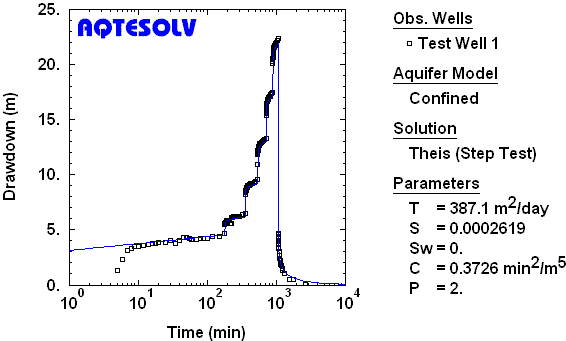

A DST is used to obtain reservoir fluid samples, static bottomhole pressure measurements, indications of productivity and short-term flow and pressure buildup tests to estimate permeability and damage extent. Some flow tests, such as drill stem tests (DSTs), are performed in the open hole. Confirming heterogeneities and boundariesĪ Flow test is an operation on a well designed to demonstrate the existence of moveable petroleum in a reservoir by establishing flow to the surface and/or to provide an indication of the potential productivity of that reservoir.Estimating the average reservoir pressure.Identifying heterogeneities and boundaries.
#Well drawdown predictions skin#


To perform a well test successfully one must be able to measure the time, the rate, the pressure, and control the rate. Analysis of the bottom-hole pressure versus flow rate data obtained from the test yields results that, when plotted on log-log paper, produce a straight line that reflects the stabilized deliverability of the well.Most well tests consist of changing the rate, and observing the change in pressure caused by this change in rate. At least one flow rate must then be maintained to stabilization in order to predict the current or future stabilized deliverability of the well. The isochronal and modified isochronal tests require that a well be produced at four different rates, each for a fixed period of time, separated by shut-in periods. The method, however, does not lend itself well to the testing of low permeability wells where the time to stabilization given by Eq. The conventional backpressure test requires that a gas well be flowed to stabilization at four different flow rates. The conventional backpressure test or flow-after-flow test, the isochronal test, and the modified isochronal tests are normally employed to predict the current and future deliverability of a gas well. Predicting the performance of a gas well is a process that has typically relied on using some form of multipoint well-testing procedure. In its simplest application, the new method allows an engineer to predict the AOF of a gas well which, when plotted on log-log paper along with the single stabilized point obtained from the pressure build-up or draw-down test, permits the construction of the stabilized deliverability curve and the determination of its equation. Using the new curves or their general equation, an IPR curve can be constructed. The curves may also be applied to unfractured wells by converting the apparent skin factor obtained from a pressure transient test to an equivalent ratio of external drainage radius to fracture half-length (xe/xf) using the apparent wellbore radius concept. The method utilizes new dimensionless IPR curves that were developed specifically for hydraulically fractured gas wells. This paper describes a method for predicting the deliverability of a gas well that requires only pressure build-up or draw-down test data. Their research focused on the development of dimensionless IPR curves for gas wells similar to Vogells curve for oil wells. Several researchers have worked to advance the theory of predicting gas well deliverability using a one-point test. All of these methods require testing a well at a minimum of four flow rates. Predicting the deliverability of a gas well is normally accomplished by conducting a four-point backpressure test, an isochronal test or a modified isochronal test.


 0 kommentar(er)
0 kommentar(er)
